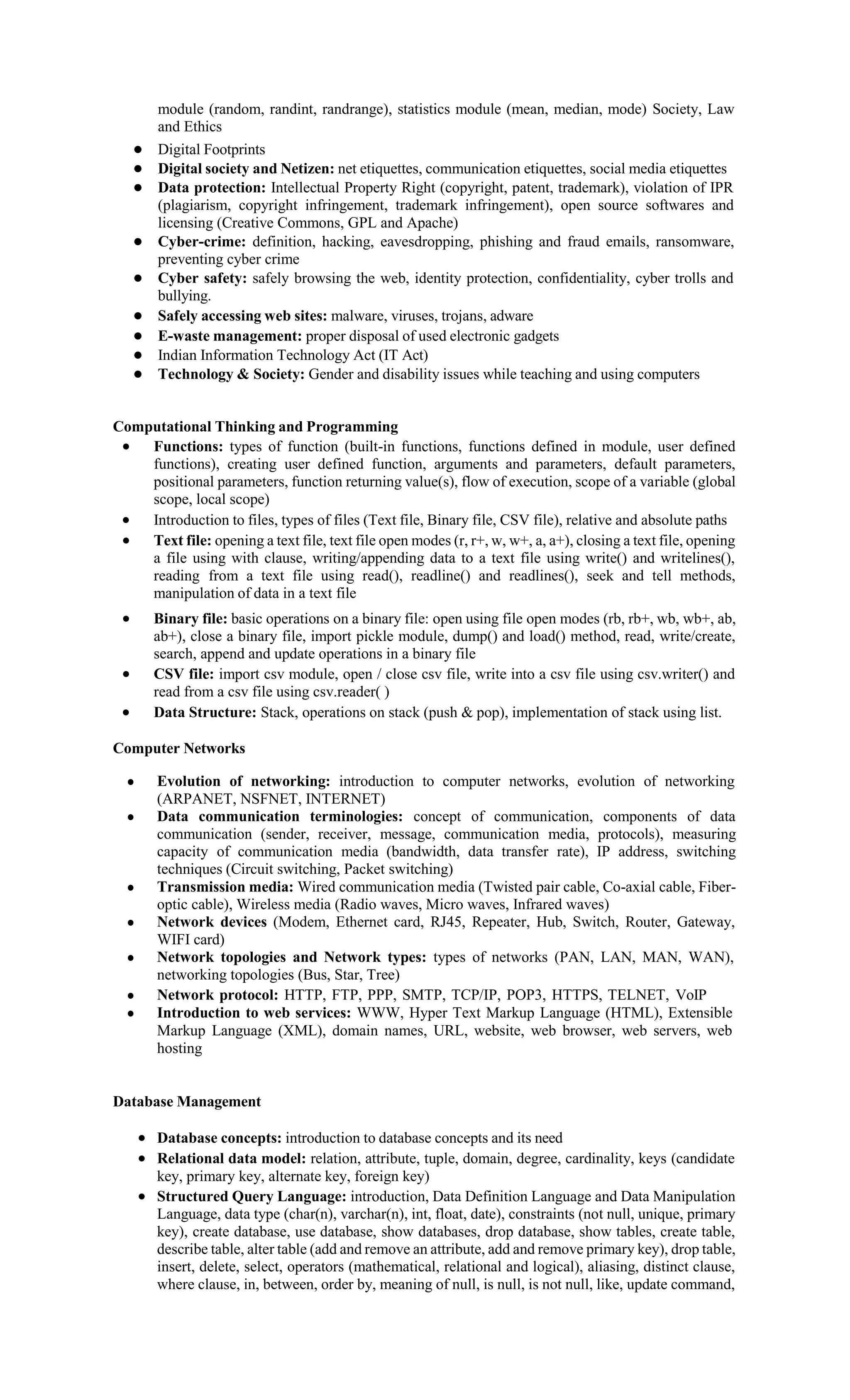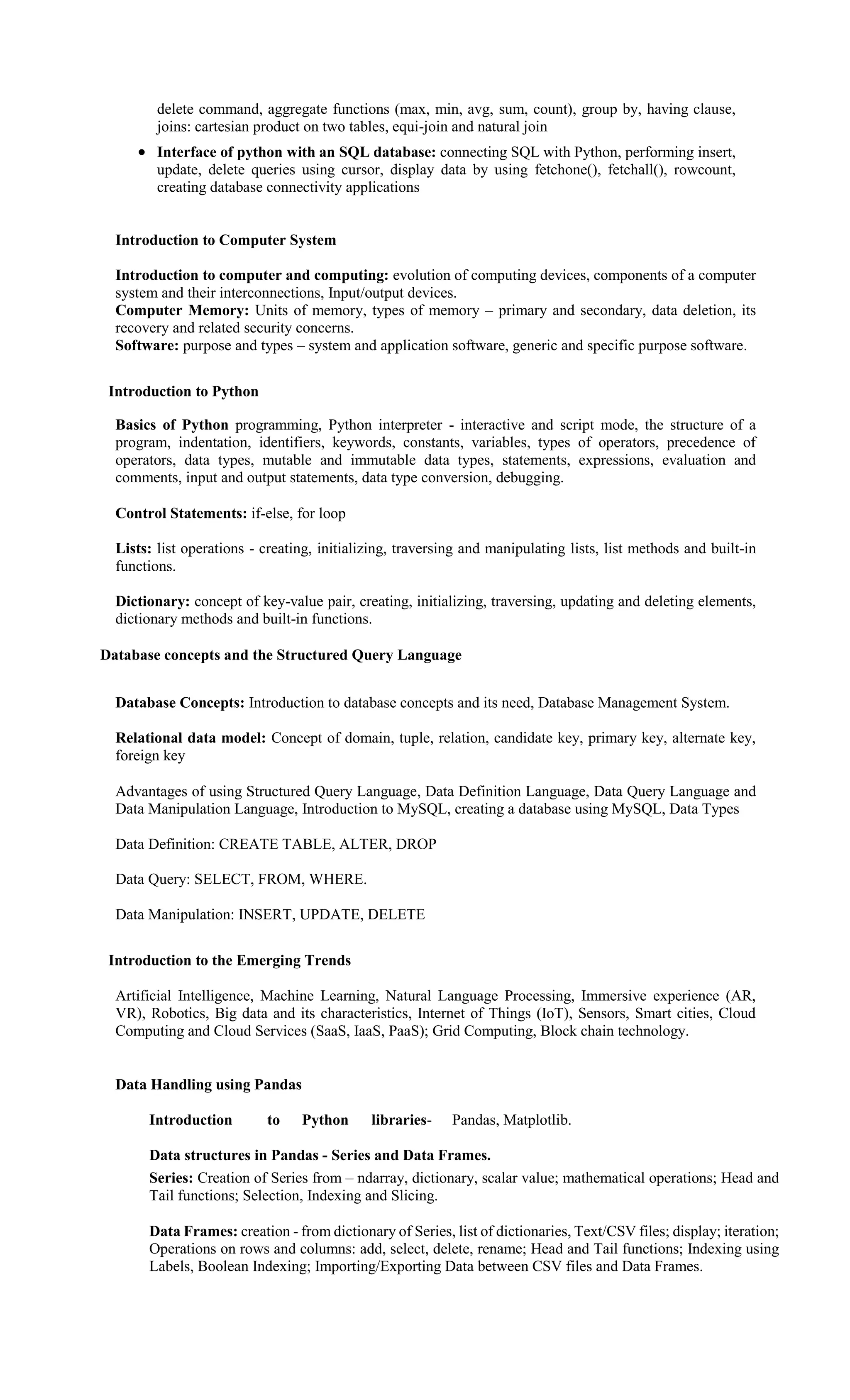This document outlines the syllabus for a course on Computer Systems and Organisation. It covers topics such as basic computer organisation including hardware, software, memory and operating systems. It also covers digital logic, number systems, encoding schemes and computational thinking including problem solving techniques, Python programming basics like data types, operators, control flow and strings, lists, tuples, dictionaries and modules. Additional topics include computer networks, database management, introduction to computer systems, and Python programming constructs like control statements and lists.



